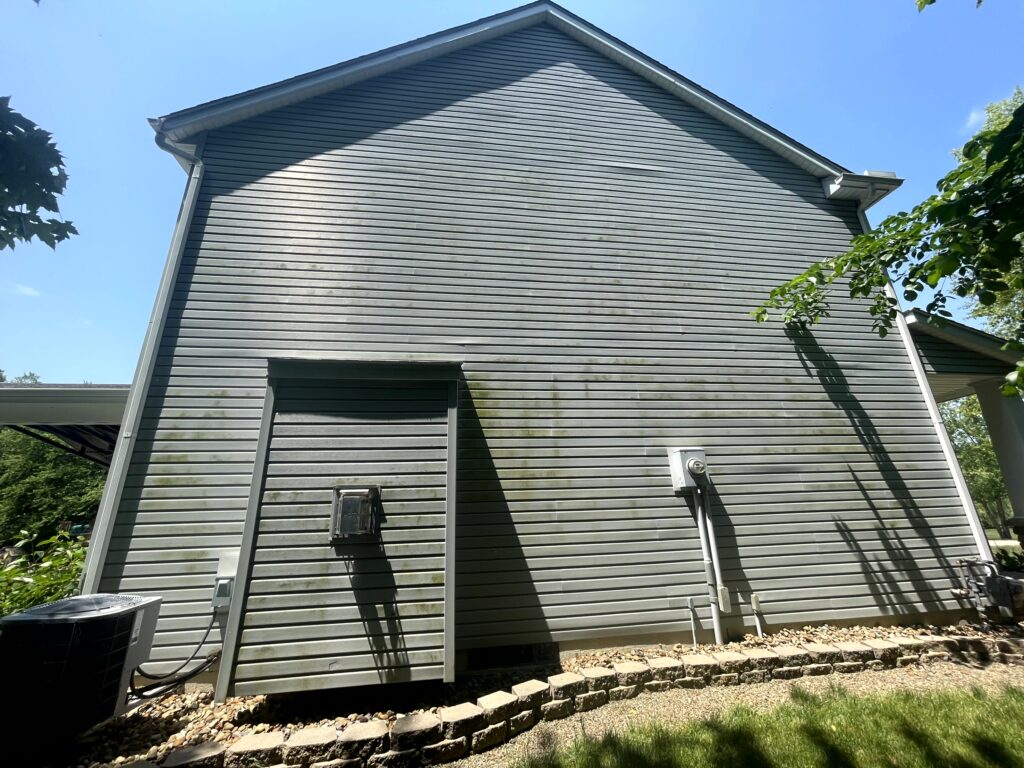Understanding the Green on Your Siding: Causes, Effects, and Solutions

The emergence of green discoloration on your siding can be perplexing, sparking concerns about its origin, impact, and resolution. Known colloquially as “green siding,” this phenomenon warrants a comprehensive examination to grasp its multifaceted nature fully. Delving into the causes, effects, solutions, and prevention techniques associated with green siding is essential for homeowners seeking to preserve both the aesthetic appeal and structural integrity of their residences.
What Causes Green Siding?
Algae Growth: Among the primary culprits contributing to green siding is the proliferation of algae. Flourishing in damp, shaded environments, algae colonies find the exterior of homes to be an inviting habitat. The green hue observed on siding typically arises from the formation of these algae clusters on its surface, manifesting as unsightly discoloration.
Mold and Mildew: Concurrently, mold and mildew represent significant contributors to the green staining phenomenon on siding. Sharing similar environmental preferences with algae, mold and mildew thrive in moist conditions, swiftly colonizing the siding’s surface when conducive environments prevail.
Lichen and Moss: Beyond algae, lichen and moss are additional organic growths implicated in the manifestation of green stains on siding. Flourishing in regions characterized by high humidity and limited sunlight exposure, such as the north-facing facades of buildings, these organisms contribute to the disconcerting discoloration observed by homeowners.
Effects of Green Siding:
Aesthetic Concerns: Foremost among the repercussions of green siding is its adverse impact on the visual appeal of residential properties. The green discoloration detracts from the exterior’s cleanliness and allure, projecting an unkempt and neglected impression that undermines the property’s curb appeal.
Structural Implications: In addition to aesthetic considerations, green siding may precipitate structural deterioration if left unaddressed. Algae, mold, and mildew possess the capacity to degrade siding materials over time, potentially inducing warping, cracking, or rotting, thereby compromising the structural integrity of the residence.
Health Ramifications: While typically innocuous in small quantities, extensive infestations of mold, algae, or mildew present health hazards to occupants. Prolonged exposure to airborne spores emitted by these organisms can exacerbate allergies and respiratory ailments, particularly among individuals with preexisting sensitivities.
Solutions for Green Siding:
Regular Cleaning Regimen: Adopting a systematic approach to siding maintenance is paramount in preventing and remedying green discoloration. Utilize a blend of water and mild detergent, coupled with a soft-bristle brush or pressure washer, to diligently cleanse the siding’s surface and eradicate algae, mold, and mildew growth.
Vegetation Management: To mitigate the proliferation of green siding, implement measures aimed at managing surrounding vegetation. Trimming trees and shrubs strategically can alleviate shading and moisture accumulation, thereby curbing the conducive conditions fostering algae, mold, and mildew proliferation.
Application of Algaecides and Fungicides: In instances of persistent green siding, consider deploying specialized algaecide or fungicide treatments to deter organic growth. Formulated to target and eradicate algae, mold, and mildew, these treatments serve as potent deterrents against recurring discoloration.
Addressing Structural Deficiencies: If structural degradation has already occurred due to green siding, prioritize remedial action to rectify compromised sections of the siding. Undertake repairs or replacements as necessary, while concurrently addressing underlying issues such as moisture infiltration and inadequate ventilation to forestall future deterioration.
Preventative Measures:
Enhanced Ventilation: Augmenting the ventilation infrastructure surrounding the residence can effectively thwart the onset of green siding. By optimizing airflow and mitigating moisture accumulation, enhanced ventilation diminishes the hospitable conditions conducive to algae, mold, and mildew proliferation.
Utilization of Siding Materials Resistant to Organic Growth: When selecting siding materials, prioritize options endowed with inherent resistance to organic growth. Opt for materials engineered to deter algae, mold, and mildew colonization, thereby fortifying the exterior against the onset of green discoloration.
Conclusion:
Green siding, while disconcerting, is a manageable predicament for homeowners armed with knowledge and proactive maintenance strategies. By comprehensively addressing the causes, effects, solutions, and preventative measures associated with green siding, homeowners can safeguard the aesthetic appeal and structural integrity of their residences. Through judicious implementation of cleaning regimens, vegetation management practices, and targeted treatments, the scourge of green discoloration can be effectively mitigated, ensuring a pristine and inviting exterior for years to come.
